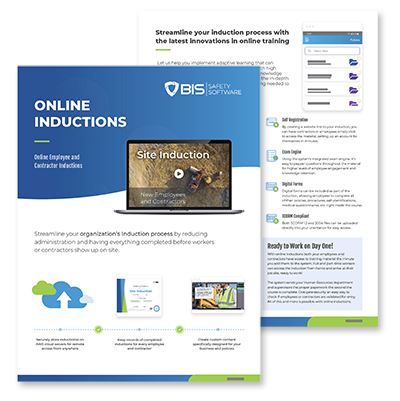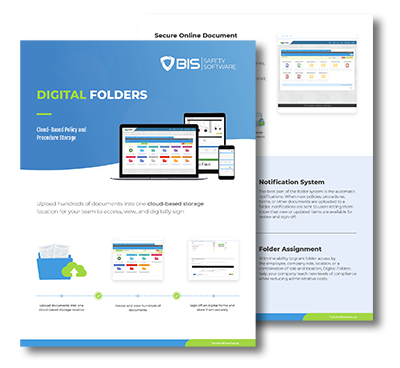The calculation of Total Recordable Injury Frequency (TRIF) is a critical aspect of monitoring safety performance within any organisation. This straightforward formula can speak volumes for a safety program’s efficacy. For example, a TRIF that exceeds the average could lead to increased insurance premiums or unexpected safety audits, potentially harming a business’s reputation as a safe workplace. Recognising safety hazards is a fundamental step towards fostering a culture of safety, making the calculation of TRIF vital for enhancing workplace safety.
Understanding Total Recordable Injury Frequency
Calculating TRIF typically occurs on an annual basis, allowing organisations to assess overall safety performance and compare their results with peers operating within the same timeframe. The formula is as follows:

This formula integrates three key elements:
· Number of Injuries: Includes all reported workplace incidents or illnesses resulting from work-related activities.
· 200,000 Hours: Represents the annual hours worked by 100 employees, assuming a 40-hour workweek, standardising TRIF results across organisations.
· Total Hours Worked: Reflects the actual hours worked by the company’s workforce, adjusting the TRIF score to the organisation’s size.
An example application of the TRIF formula might involve a business with 150 full-time employees and three reported injuries over a year, resulting in a TRIF of

Why Monitor TRIF?
The primary aim of tracking TRIF is to evaluate the effectiveness of existing safety measures and compare safety performance across the industry. High TRIF scores indicate a need for safety improvements, while low scores suggest effective safety protocols.
Advantages and Challenges of TRIF
While TRIF offers a standardised metric for safety performance, its application presents both benefits and drawbacks.
Advantages:
· Risk Management Insight: TRIF provides valuable insights into an organisation’s risk management effectiveness. By tracking and analysing TRIF scores over time, companies can identify trends in safety performance, allowing for proactive adjustments in safety protocols and risk management strategies. This forward-looking approach helps in preventing accidents before they occur, rather than reacting to them after the fact.
· Stakeholder Confidence: A low TRIF score can enhance confidence among various stakeholders, including investors, customers, and regulatory bodies. It serves as a quantifiable metric demonstrating a company’s commitment to safety, which can be crucial for maintaining investor trust, customer loyalty, and regulatory goodwill. This confidence can be particularly important for companies in industries where safety is a significant concern, such as construction, manufacturing, and energy.
· Consistency: Provides a consistent measure of safety performance across industries.
· Simplicity: Simplifies calculation with only two necessary figures: reported incidents and hours worked.
Challenges:
· Overemphasis on Quantitative Metrics: One challenge with TRIF is the potential overemphasis on quantitative metrics at the expense of qualitative aspects of safety culture. While TRIF provides a numeric representation of safety incidents, it does not capture the underlying attitudes, behaviours, and practices that contribute to a safe working environment. Companies focusing solely on reducing their TRIF score may overlook the importance of fostering a positive safety culture that encourages safe behaviours beyond mere compliance with safety protocols.
· Potential for Underreporting: Another challenge associated with TRIF is the potential for underreporting of injuries and incidents. Since a lower TRIF score is often viewed favourably, there may be pressure on employees and managers to underreport or not report minor injuries to maintain or improve the company’s TRIF score. This underreporting can lead to a false sense of security regarding the company’s safety performance and hinder efforts to address and mitigate workplace hazards effectively.
· Distortion: Small companies may face distortion in TRIF scores, potentially penalising transparency.
· Obscurity: Including all work hours can obscure specific risks within different company departments.

Considerations in Using TRIF
While TRIF is a useful metric, it has limitations. For example, sectors like healthcare, agriculture, and construction have varying TRIF scores, which do not necessarily reflect the severity or nature of injuries. Relying solely on TRIF for predicting future safety performance can be misleading.
Reducing TRIF: A Priority
Reducing Total Recordable Injury Frequency (TRIF) should be a foremost priority for UK organisations, not only to enhance workplace safety but also to mitigate financial losses and protect their reputation. A lower TRIF score signifies fewer work-related injuries and illnesses, reflecting positively on an organisation’s commitment to maintaining a safe work environment. This commitment is crucial, as occupational safety directly impacts employee well-being, productivity, and overall business success.
· Financial Benefits: Lower TRIF scores can lead to reduced insurance premiums as insurers often view a low TRIF as an indicator of lower risk. Additionally, minimising workplace injuries can significantly decrease the costs associated with medical care, legal fees, and compensation.
· Reputation: Companies with low TRIF scores are perceived as safer places to work, attracting and retaining talent more effectively. This reputation for safety can also be a deciding factor for clients and partners when choosing companies to do business with.
· Regulatory Compliance: Maintaining a low TRIF helps ensure compliance with UK health and safety regulations, potentially avoiding penalties and fines associated with non-compliance.
· Employee Morale and Productivity: A safe work environment boosts employee morale, leading to higher productivity and job satisfaction. Employees are more likely to stay with a company that prioritises their health and safety.
UK Statistics and Context
According to the Health and Safety Executive (HSE), the governing body responsible for the regulation and enforcement of workplace health, safety, and welfare in the UK, there were approximately 693,000 non-fatal injuries to workers according to self-reports in 2019/20. Additionally, the HSE reported 142 workers killed at work in 2020/21. These statistics underscore the importance of rigorous safety practices and the need for ongoing efforts to reduce TRIF.
The construction sector, often highlighted for its higher risk of injury, reported an incidence rate of fatal injuries approximately four times the all-industry rate, according to HSE data for 2020/21. This disparity illustrates the critical need for targeted safety interventions in higher-risk industries.
Strategies for Reducing TRIF in the UK
· Enhanced Training and Education: Providing comprehensive safety training and education for all employees, tailored to the specific risks of their roles and industry.
· Investment in Safety Technology: Adopting advanced safety technologies, such as wearables that monitor workers’ physical condition or software that analyses safety data to predict and prevent incidents.
· Engagement and Communication: Fostering a culture of safety through regular communication, encouraging reporting of hazards without fear of retaliation, and involving employees in safety planning and improvements.
· Regular Audits and Inspections: Conducting regular safety audits and inspections to identify potential hazards and implement corrective actions promptly. These can be simplified with Field Hazard Assessment forms that keep everything consistent and localized in one cloud system. This allows for trend data to be quickly found and subsequent action taken.
· Benchmarking and Continuous Improvement: Benchmarking safety performance against industry standards and best practices to identify areas for improvement and implementing a continuous improvement process for safety practices.
Total Recordable Injury Formulas Summarized:
In conclusion, the Total Recordable Injury Frequency (TRIF) serves as a pivotal metric for assessing and enhancing workplace safety across various industries. While it offers significant advantages such as providing insights into risk management, standardising safety performance measures, and boosting stakeholder confidence, it also presents challenges, including the potential for overemphasis on quantitative data and the risk of underreporting incidents. To truly benefit from TRIF, organisations must approach it as part of a comprehensive safety strategy that values both the numbers and the underlying culture of safety. By balancing the quantitative assessment of TRIF with qualitative measures of safety culture, companies can not only achieve lower TRIF scores but also foster safer, more productive, and more satisfying workplaces for their employees. The journey towards reducing TRIF is not just about improving statistics; it’s about committing to the well-being of every individual within the organisation and ensuring that safety becomes an intrinsic part of the corporate ethos.
Additional Articles

How to Utilise a Training Matrix, and Its Role in Enterprises
A training matrix was built for growth, skill management, and training your team to those competitive safety and productive levels required for modern business. Today, let’s talk training matrices. … Read More

Onboarding and Induction Costs in the UK
Explore effective strategies for managing onboarding and induction costs in the UK, and how technology can make the process more efficient and cost-effective for businesses. … Read More

























